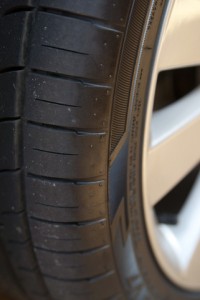 What’s Wrong with Their Study?
What’s Wrong with Their Study?
Consumer Reports is a highly respected magazine that publishes reviews and comparisons of consumer products and services based on reporting and results from its in-house testing laboratory and survey research center. Most of the time, Consumer Reports has great content and does a good job in their testing and research processes. However, the magazine conducted a nitrogen air loss study between 2006-2007 (it was a year-long study), and we think that this study isn’t a true representation of the benefits of nitrogen tire inflation.
Consumer Reports tested nitrogen air loss by evaluating pairs of 31 tire models of H- and V-speed rated, all-season tires, filling one with 95% nitrogen and the other with regular air. Their use of a variety of tire models is good, but that’s not the problem. The problem is in how this study was conducted. Consumer Reports filled and set the inflation pressure at room temperature to 30 psi (pounds per square inch); set the tire outdoors for one year; and then rechecked the inflation pressure at room temperature after a one year period.
Why the Nitrogen Tire Inflation Results are Skewed
The Consumer Reports study found that nitrogen does reduce pressure loss over time, but the reduction is only a 1.3 psi difference from air-filled tires, which was considered minimal. However, since these tires weren’t tested under normal operating conditions, which not only affect tire pressure retention (which is what the test was meant to study) as well as what that tire pressure retention can mean under normal operating conditions (such as a smoother, safer ride, or a lower likelihood for a blowout, or improved fuel economy), this 2006-2007 study only tells half the story. Although it found that the tires filled with nitrogen better retained their proper tire pressure than the air-filled ones, the test and its results don’t do a good job of what this means, making it too easy to argue that it doesn’t mean anything at all.
There are Holes in the Q&A Too
As a follow-up to the tons of comments the article received (most recent comment from April 2012) a Q&A was published just a week after the original article to respond to all the comments and to address some of the issues that were brought up. We found a few holes in that article as well. Here’s one example:
Q: I just thought I’d remind everyone that nitrogen makes up like 75-78% of ambient air, so air verse nitrogen should make little or no difference.
A: Yes, nitrogen makes up most of the air — about 78% as you point out. Think about this, though: if you fill your tires with air, the oxygen is more likely to permeate out of the tires before the nitrogen and over time you end up with a higher concentration of nitrogen. I have not checked this but it seems possible.
Sure, it’s possible, but you still end up with an underinflated tire. A tire of pure nitrogen, but not at proper tire pressure is just as bad as an underinflated tire that has regular air in it. Choosing this method to get your “nitrogen tire” simply because it’s cheaper doesn’t mean that it’s better for you or your tires.
There’s Nothing Wrong with Nitrogen Tire Inflation
This study from Consumer Reports is often cited as the death-blow to nitrogen tire inflation. Since Consumer Reports found the benefits to be negligible, the benefits must be negligible and the whole thing must be a scam to make more money. However, we’ve poked holes into how this study was conducted, and we think that the service ought to at least be tested again in a manner that actually evaluates how the tires perform and maintain tire pressure while being used on the roads, not just sitting idle outside for a whole year.
Something that many naysayers miss is Consumer Reports’ conclusion of their study, which reads:
Bottom line: Overall, consumers can use nitrogen and might enjoy the slight improvement in air retention provided, but it’s not a substitute for regular inflation checks.
Essentially, they don’t discredit the use of nitrogen. They simply say that it’s not a substitute for regular tire pressure checks, which is something that the nitrogen tire inflation industry and its supporters have been saying this whole time. Naysayers ought not to discredit the practice so quickly based on one study, especially since the study has its flaws and that the researchers did not conclude that the practice was bogus.





